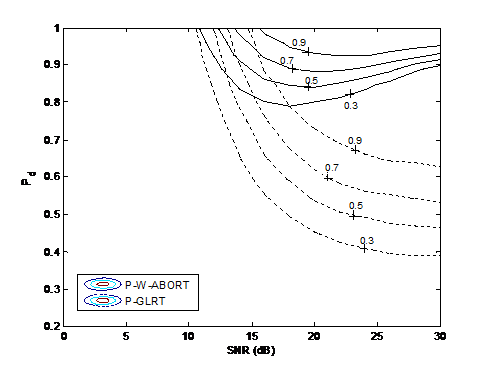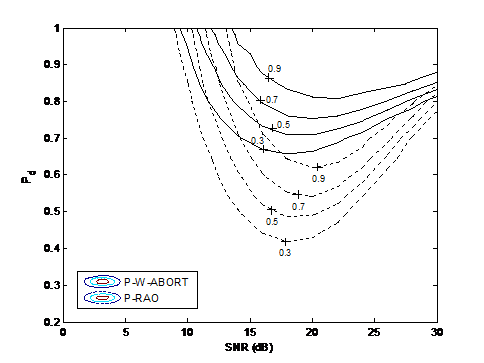Adaptive radar detection of point-like targets embedded in Gaussian disturbance has received an increasing attention in the last decades. Most of existing solutions assume a homogeneous environment, wherein the training samples, which are free of signal components (secondary data), share the same covariance matrix of the noise in the cell under test (CUT).
Unfortunately, secondary data are often contaminated by power variations over range, clutter discretes, and other outliers which make secondary data not representative of CUT. An alternative means to circumvent the lack of a sufficient number of homogeneous secondary data is to exploit the structural information of the noise spectral properties.
HAO Chengpeng, MA Xiaochuan, YAN Shefeng and CAS member HOU Chaohuan from the State Key Laboratory of Acoustics, Institute of Acoustics, Chinese Academy of Sciences, China, and Danilo Orlando from the ELETTRONICA S.p.A., Via Tiburtina Valeria, Italy consider the problem of adaptive detection of point-like targets in Gaussian disturbance with unknown but persymmetric structured covariance matrix induced by the space and/or time symmetry of the sensing system.
In this research, two selective persymmetric adaptive receivers capable of rejecting with high probability signals whose signatures are unlikely to correspond to that of interest are proposed. To this end, the Rao test design criterion which can lead to selective receivers and the GLRT assuming that under the null hypothesis the collected returns contain a signal component orthogonal to the nominal one, are fully exploited. The performance assessment, conducted by Monte Carlo simulation, shows the superiority of the proposed detectors over their unstructured counterparts when a limited number of training data is available, as shown in Figs. 1 and 2.
This research was supported by the National Natural Science Foundation of China (NSFC: 61172166).
The research with the title of “Persymmetric Detectors with Enhanced Rejection Capabilities” will be published on IET Radar, Sonar & Navigation (DOI: 10.1049/iet-rsn.2013.0115), available online: 19 December 2013.

Fig. 1 Contours of constant Pd of P-W-ABORT and P-GLRT (Image by HAO).

Fig. 2 Contours of constant Pd of P-W-ABORT and P-RAO (Image by HAO).
Contact:
HAO Chengpeng
Institute of Acoustics, Chinese Academy of Sciences, Beijing, 100190, China
Email: haochengp@mail.ioa.ac.cn


